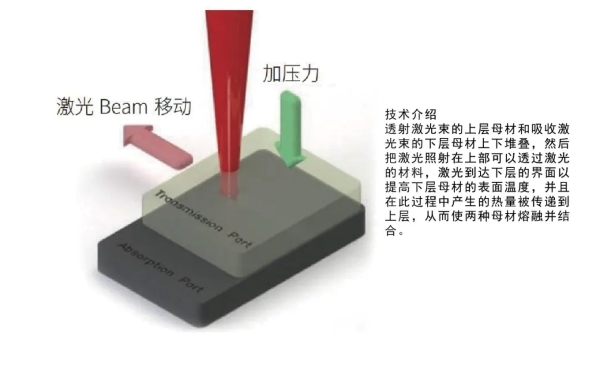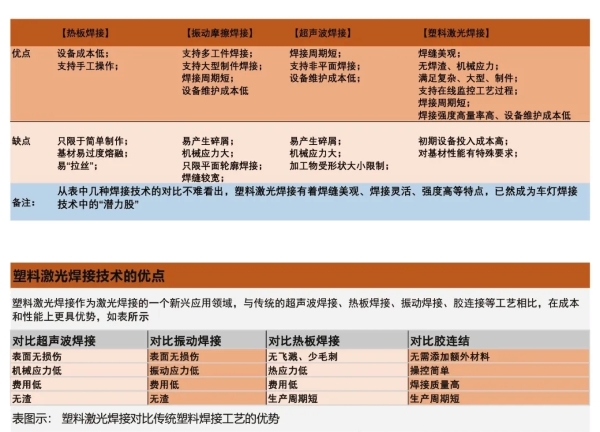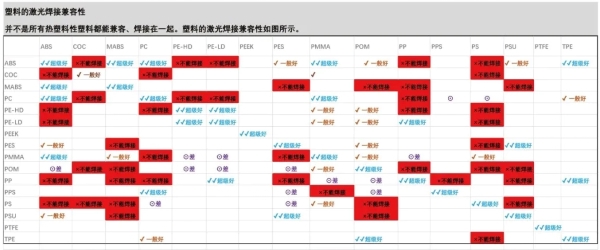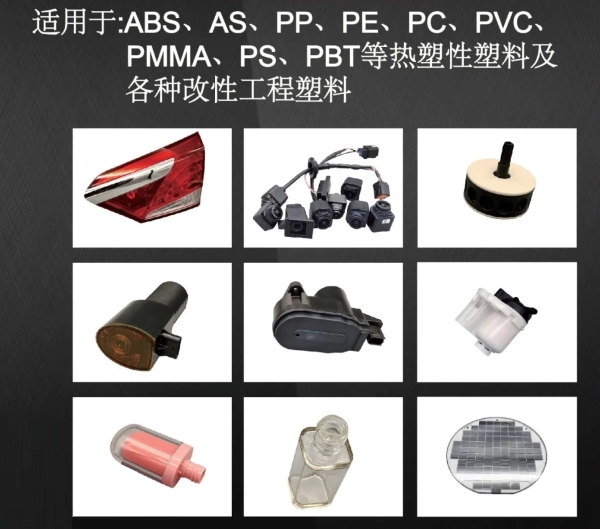Application of Laser Plastic Welding Technology in Automotive Camera Manufacturing
In autonomous vehicle technology, onboard cameras and radars serve as critical sensors. Cameras capture images to obtain environmental information, while radars detect surrounding objects by transmitting and receiving radio waves. In this article, Songsheng Optoelectronics will briefly share the application of laser plastic welding technology in automotive camera manufacturing.
With the continuous advancement of autonomous driving technology, the number of onboard cameras has increased from just two in early models to over twenty today. These cameras can be categorized by installation position into front-facing, rear-facing, surround-view, interior, and side-view types. Functionally, to meet the requirements of ADAS technology, various camera types have emerged, including monocular, multi-lens, wide-angle, and night vision cameras.
The precision electronic components inside these cameras demand high welding standards, particularly in harsh environments where features like waterproofing, salt spray resistance, and corrosion resistance are essential. This places extremely high requirements on the sealing and stability of welds. Traditional welding techniques often struggle to achieve the necessary weld strength and hermetic sealing. In this context, laser plastic welding technology demonstrates significant advantages for camera encapsulation.
Understanding the Application Advantages of Plastic Laser Welding in Camera Manufacturing through Its Principles and Characteristics
I. Principle of Laser Plastic Welding Technology
Technical Description:
The laser welding process employs vertically stacked plastic components where the upper substrate transmits the laser beam while the lower substrate absorbs it. The laser irradiates the upper transparent material, penetrating through to the interfacial layer where the lower absorbing material converts the optical energy into thermal energy. This localized heating elevates the interface temperature while simultaneously conducting heat to the upper material, creating a molten fusion zone that achieves molecular-level bonding between both substrates (as illustrated in the accompanying diagram).

Principles of Laser Plastic Welding Technology
II. Advantages and Characteristics of Laser Plastic Welding Technology
Produces precise, robust, airtight and waterproof weld seams that create tight surface connections between components;
Minimizes resin degradation and generates minimal particulate debris during the welding process;
Significantly reduces vibrational stress and thermal stress in finished products compared to other fusion methods;
Capable of joining various types of dissimilar plastics;
Particularly effective for welding components with complex geometries;
Enables welding in hard-to-reach areas inaccessible to other methods, offering excellent controllability and adaptability.

Comparison Between Laser Plastic Welding and Traditional Plastic Welding
III. Laser Plastic Welding Process Flow Overview
Pre-welding material characterization (color & light transmittance analysis)
In-process quality monitoring & welding parameter control
Laser system parameter configuration
Post-welding performance validation testing

Laser Plastic Welding Compatibility
IV. Material Technology for Automotive Cameras
The plastic components such as retaining rings, lens barrels, bases and brackets are primarily manufactured using specialized "black plastic" compounds. To meet laser welding requirements, the upper layer uses laser-transparent plastic while the lower layer employs light-absorbing plastic. Many manufacturers are developing laser-weldable materials including PBT, LCP, PPS, PC/ABS and PA specifically for automotive camera applications.

Illustrations of Sample Components Suitable for Laser Plastic Welding
V. Advantages of Laser Plastic Welding for Automotive Cameras
The Songsheng editor has summarized the following advantages for reference:
The two materials are fused together, providing excellent welding stability and high surface cleanliness
Traditional camera housings using adhesives or screw fasteners may detach under certain environmental conditions, resulting in unstable sealing performance that affects camera functionality. Laser welding fuses the two materials to form a new intermetallic compound without excess material, delivering high surface cleanliness and superior stability.
Structural refinements allow adjustable weld line positioning
Through optimized design of upper and lower camera housing structures, the weld line can be positioned along the product's peripheral edges via clever design and plastic laser welding fixtures.
Welding quality monitoring and traceability
For controlling flatness and vertical dimensions of post-weld products, the plastic laser welding process incorporates program optimization and CCD cameras to enable process monitoring, quality control, and rejection of defective components.
Fully automated processing with low welding costs
For mass production, particularly given the increasing number of onboard cameras (up to 15-21 units per vehicle) and promising market prospects, laser welding enables automated processing that significantly reduces manufacturing costs.
Key Advantages of Songsheng Optoelectronics' Laser Plastic Welding Technology:
Utilizes high-energy-density laser heat sources to optimize temperature at plastic joint interfaces, ensuring both high-speed and high-precision welding processes.
By adjusting laser beam shape and size, the heat-affected zone and joint area can be minimized. The welded surface shows no visible traces or damage from the welding process.
Offers optional 976nm/2μm multi-band welding heads with integrated CCD coaxial temperature measurement interfaces for real-time monitoring of constant-temperature welding.
Eliminates restrictions on part shapes and sizes, significantly enhancing design flexibility for components.
Vibration-free welding process, particularly beneficial for vibration-sensitive components like electronic parts and medical devices.
Non-contact processing (no physical contact between joined parts and heat source), easily maintaining hygiene standards for medical and food equipment.
High flexibility in laser beam delivery, facilitating automation implementation.
Contact: Mr.Xiao
Phone: +86-13385280662
E-mail: market001@whlaser.cn
Add: Room 02, Floor 5, Building 9, Gezhouba Sun City, No. 40, Gaoxin 4th Road, Donghu New Technology Development Zone, Wuhan